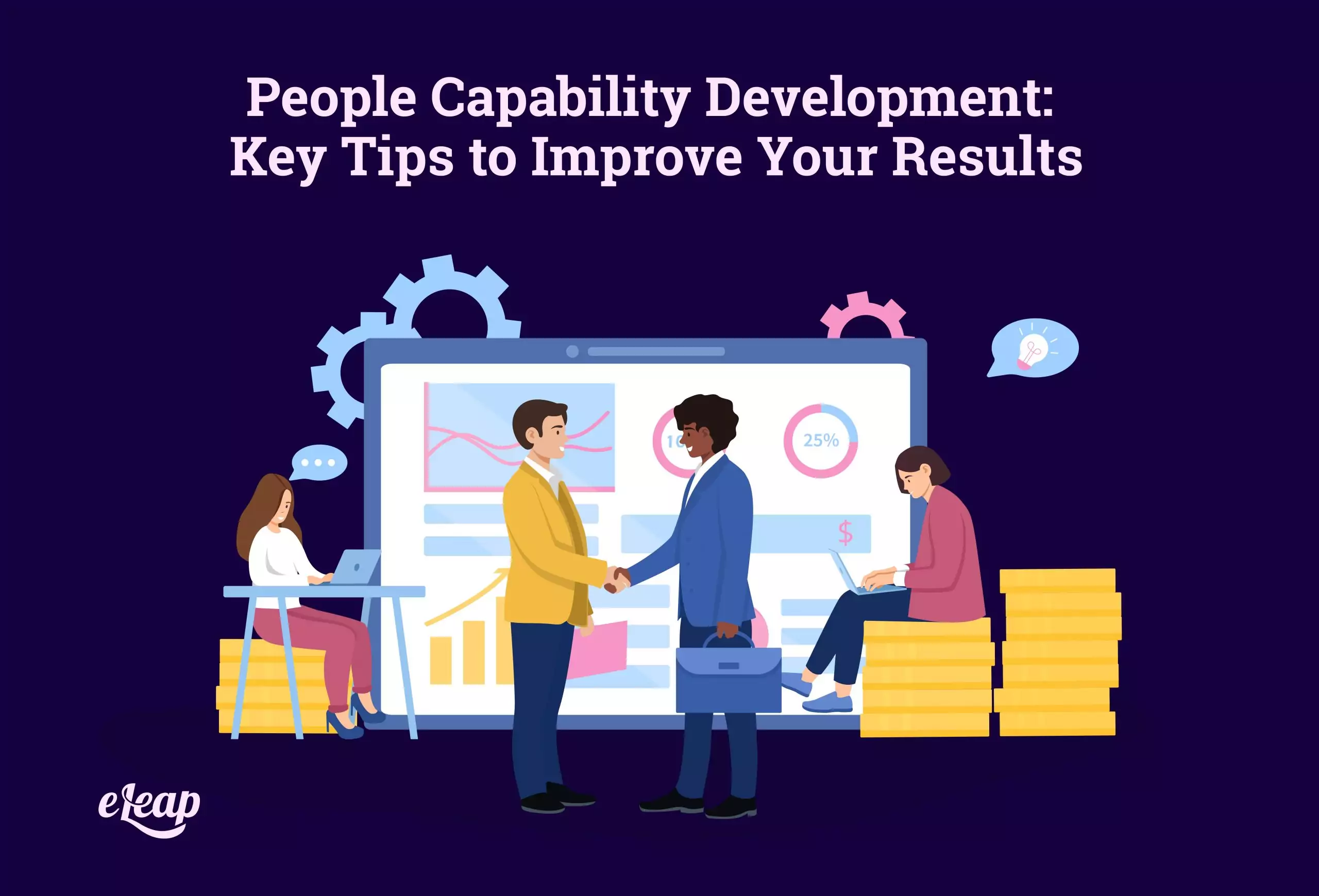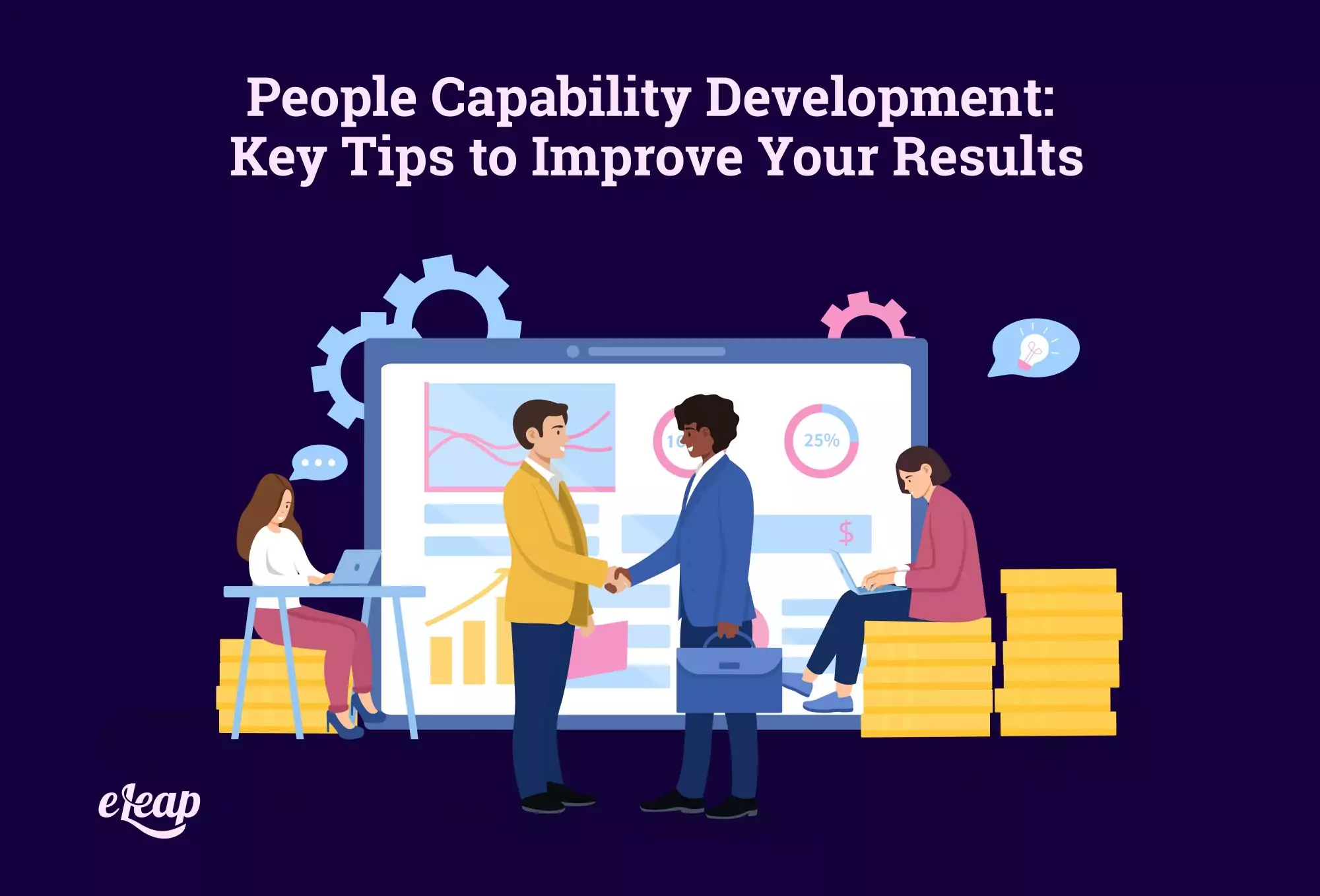People Capability Development: Key Tips to Improve Your Results

What is it that makes someone admire an organization? Is it the ability to turn a profit? Is it how a company sets a particular strategy?
If you were to ask most people what they admire most about some of the leading companies today, chances are good that the answers would trend toward the other end of the spectrum – the ability to innovate, the focus on corporate responsibility, or the ability to solve a customer’s challenges in unique ways.
None of those have anything to do with a company’s corporate structure and everything to do with capabilities. We tend to see innovation as one of a company’s capabilities, but the truth is that it derives from the people within the organization – people capabilities are corporate capabilities. They are also the result of major investments in learning and development efforts, communication capabilities, and culture building.
To clarify things, consider what Deloitte said on the subject. In an article published in 2020, the authors stated, “In the future of work, a paradox is becoming increasingly apparent and important: The more advanced and pervasive technology becomes, the more important humans are to the equation – humans as customers, humans as buyers, humans as engines of growth and innovation, humans as users, collaborators, and stakeholders. And leaders are seeing fresh importance in how organizations deploy and develop their people to create new value and navigate increasing ambiguity.”
Increasingly, we’re coming to realize that people’s capabilities are what power organizational success. It’s people capabilities that set organizations apart that create key differentiators both in product/service offerings and in terms of employment.

The People Connection
Without people, your organization doesn’t exist. People are central to the very idea of a business – you need customers, and you need employees. In truth, it could be argued that organizations are nothing more than the razor-thin line of synergy between employees and customers.
That makes it more important than ever that leaders can develop their people’s capabilities. After all, those capabilities are what allow the organization to innovate, to grow, to connect with other people (customers), and prosper. How do you go about improving those capabilities, though?
Professional Development as a Goal
First, make sure that your L&D efforts do more than just support mandatory corporate training. Yes, inclusion, equity, diversity, and the rest are critical, but your learning and development initiatives must be so much more than that. Make professional development one of the key goals of your L&D strategy. When you do that, it becomes simpler to connect the dots and help your people improve their capabilities while aligning those with the organization’s goals.
Mentors Matter
While formal learning and development content is critical to success, never underestimate the power of the human connection. Humans are social creatures, and we generally learn best from others. Ensure you supplement your other L&D efforts with a mentorship program or at least something similar.
Don’t assume that mentorships must be formal situations. These situations can take many shapes and forms. For instance, simply having someone shadow another employee during cross-training is a form of mentoring.
Take the time to explore the many ways that mentors and mentees can come together, learn, and grow. With a little bit of time and a willingness to experiment, you can create robust mentoring options that support your larger L&D strategy.
Know Your People
This is perhaps the single most commonly made recommendation when it comes to developing people’s capabilities. However, it bears repeating all that. Why? Simply put, leaders too often focus on the “how” while excluding the “who” and thereby bypass the “why.”
In plain language, that simply means that without understanding your employees, their goals, strengths, weaknesses, and talents, it becomes impossible to achieve meaningful capability development. That understanding must be at the core of all your development efforts.
After all, if Bob has zero interest in math, providing him with training in accounting is pointless. The converse is also true. If Julie already has significant mastery in the area of human psychology, requiring her to complete basic workplace psychology training for her role in HR is redundant and a waste of both time and resources.
Get to know your people. Understand where they are and where they want to go, and then develop strategies that help them get from point A to point B while finding ways to connect the journey and destination with your organization’s goals.
Don’t Be Afraid to Challenge Them
All too often, L&D content is developed with the lowest common denominator in mind. While this is fine for mandatory corporate training, it’s a poor choice when it comes to professional development-related content. Don’t be afraid to challenge employees with learning. Without challenges, engagement and motivation begin to falter. With challenges, employees become more engaged in their learning, growth accelerates, and your people find greater value in your L&D offerings.
Conduct a Capabilities Audit
Every organization has a skills gap somewhere, perhaps in more than one place. Without knowing where that gap is, your L&D efforts are largely a guessing game. Conduct a capabilities audit to determine what you need to be able to do and what people’s capabilities are necessary to achieve that. Want to deliver a better customer experience? Define what your people need to be capable of offering. Want to innovate with better quality products? Determine what your people need in terms of innovation-related capabilities.
A capabilities audit will help you connect the dots and identify the dots you didn’t even know were there. Then, you can create a full picture rather than just a rough sketch. It’s the difference between a bucket brigade and a 21st-century fire suppression system.
Get Ready to Succeed
At the heart of every organization are its people and their capabilities. Learning and development initiatives are at the core of building and connecting those capabilities with your organization’s goals. Use the tips covered above to build your people’s capabilities and achieve meaningful, measurable success.